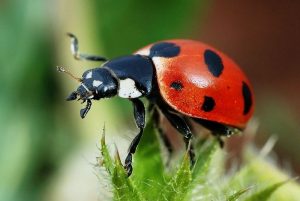by Ken Lain, the mountain gardener
I have some deeply sorrowful news that has shaken a family to its core.
 A great man has fallen. He was a man of God, a dad, the best grandfather you could want for your kids, a lover of family, friends, and mankind. A positive influence yet humble, a compassionate and fun-loving man, Les Brokke, stepfather extraordinaire, died this week. He will be profoundly missed.
A great man has fallen. He was a man of God, a dad, the best grandfather you could want for your kids, a lover of family, friends, and mankind. A positive influence yet humble, a compassionate and fun-loving man, Les Brokke, stepfather extraordinaire, died this week. He will be profoundly missed.
When emotions are stirred I must write, and when great emotions are stirred deep within my soul I write poetry. Amid a flood of tears I wrote this poem dedicated to a true father figure of the Lain family.
The Magnificent Giant
A giant pine, magnificent and old
Stood staunch against the sky.
All around it shed beauty, brightness, grace and power.
Within its fold birds safely reared their young.
The velvet ground beneath was rich and gentle,
and the cooling shade gave cheer to passers-by.
Towering arms stood a landmark, erect and unafraid,
As if to say, ‘Rest, fear not life’s perplexities’
He fell today.
Where he had dauntless stood was loneliness and void.
But men who pass pay tribute and say,
‘To know this life was good.
It left a mark on me; his handiwork stands fast’
And so he lives. Such life no bonds can hold,
This giant pine, magnificent and old.
We love you Les Brokke, and will miss you every day. (awash in tears) For now, goodbye.
If you are reading this column you are part of not just the Watters family, but the Lain family itself. Thank you for allowing me to share our grief.
~ * ~ ~ * ~ ~ * ~
This week’s column is dedicated to companion plants that keep insects out of the garden.
Companion planting is an age old tradition, especially companion vegetable plants. It’s a garden technique that involves planting two or more plants near each other that will benefit both. The benefit can be more vigorous growth, higher yields, repelling pests, or attracting predators of common pests.
Diversity is desirable for a problem-free environment in any garden.
Learning which plants to pair as companions takes a bit of trial and error. For example: anise seems to germinate better when grown with coriander, but coriander doesn’t grow well next to anise. Garlic deters beetles, but plant it too close to anything in the pea or bean family and it will inhibit their growth.
One of the most compelling reasons to grow companion plants is the ability of certain plants to attract beneficial insects. Beneficials are insects that feed on common garden pests like aphids and caterpillars. Beneficial insects, like ladybugs, are considered the good guys and one of the reasons why gardeners are cautioned against randomly spraying insecticides.
Here’s a list of local “Good Guys” ~ Beneficial Insects Welcomed In Your Garden
Parasitic wasps – feed on aphids, caterpillars, grubs
Lacewing larvae – feed on aphids in a ferocious way
Ladybugs– feed on aphids
Ground beetles – feed on ground-dwelling pests like earwigs, inch worms, pillbugs.
Hover & Robber flies – feed on many insects including leafhoppers, caterpillars
Because insects tend to have different feeding requirements during various stages of their development, a diversity of plant material is essential to attracting beneficial insects.
Although beneficial insects do feast on pest insects, there may be certain points in their life cycles when their diets are confined to nectar and pollen. So to attract these insects to your garden, you’ll need to provide host plants as both food and shelter sources. All the more reason diversity is so important in every landscape.
Diversity in both plant material and season of availability is crucial. Hedge rows serve this function well. The trees, shrubs, and flowers leaf out sooner in the spring than cultivated crops and provide early food sources for these good bugs.
Hedge rows are rare today, but you can easily plant a mixed border of fruiting and flowering trees, shrubs, and perennials that has something in bloom all season. This patchwork of plants benefits your ornamentals and planting it near a vegetable garden ensures beneficial insects are attracted to your vegetable crops.
What to Provide to Attract Beneficial Insects ~
Low-growing plants such as thyme, rosemary, and mint as cover for ground beetles.
Shady, protected areas for laying eggs
For tiny wasps, tiny flowers such as fennel, angelica, coriander, dill, Queen Anne’s Lace, clovers, yarrow, and rue.
Composite flowers like daisy and chamomile, along with spearmint, peppermint, and catnip to attract predatory wasps, hover flies, and robber flies.
Herbs work especially well as companion plants. The fragrance from fresh herbs multitask by attracting beneficial insects and repelling unwanted insects throughout the gardens. The following list is compiled from my experience and input from local gardeners. Keep in mind that some plants work in conjunction with factors pertinent to each garden’s environment so your results might not be the same as mine.
Companion Plants to Deter Local Pests ~
Aphids – Chives, Coriander, Nasturtium.
Ants – Tansy
Asparagus Beetle – Marigolds
Bean Beetle – Marigold, Nasturtium, Rosemary.
Cabbage Moth – Hyssop, Mint, Oregano, Rosemary, Sage, Tansy, Thyme.
Carrot Fly – Rosemary, Sage
Flea Beetles – Mint and Catmint (Contain the insect repellent nepetalactone. Steep in water then spray on plants.)
Flies – Basil, Rue
Japanese Beetles – Garlic, Tansy, Rue (For use near roses and raspberries.)
Potato Bugs – Horseradish
Mosquitoes – Basil, Rosemary, Lavender
Moths – Santolina
Nematodes – Marigold
Squash Bugs & Beetles – Nasturtium, Tansy
Ticks – Lavender (Also thought to repel mice and moths.)
Tomato Horn Worm – Borage, Marigolds
Until next week, I’ll see you at the garden center.
Ken Lain can be found throughout the week at Watters Garden Center, 1815 W. Iron Springs Rd in Prescott, or contacted through his web site at WattersGardenCenter.com or FB.com/WattersGardenCenter

